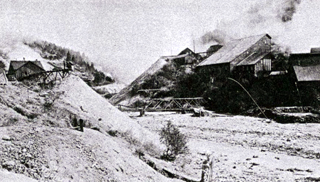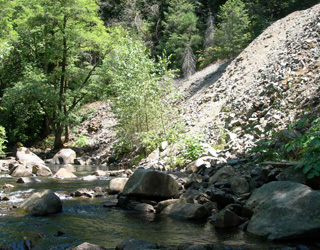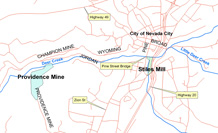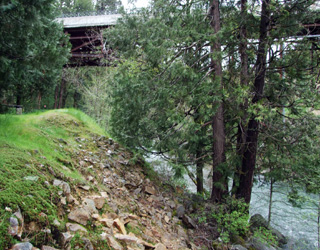The Providence Mine Brownfield site is a 45-acre property owned by the City of Nevada City located at the end of Providence Mine Road along the south side of Deer Creek, approximately one mile downstream of downtown Nevada City. The Providence Mine was a large hard rock gold mine which operated from 1851 to 1919 and produced an estimated $20 million in gold and associated minerals. The operation included a 40-stamp mill and a chlorination works where releases of mercury and concentrated heavy metals likely occurred. The City-owned property includes the eastern portion of the former mine site. A popular-use trail traverses the site, passing directly through the mine features in the northern portion of the site.
The Providence Mine Brownfields Cleanup Project will be performed on two areas in the northwestern portion of the property. The "Mine Features Area" is located on a benched area above Deer Creek and adjacent to the east of Providence Mine Road where several mine structures and the Providence Mine Shaft were located. The "Waste Rock Area" is located on a steep slope extending from the Mine Features area to Deer Creek.
Cleanup work proposed for the Mine Features Area includes excavation and off-site disposal of a limited amount of highly contaminated soil, trail construction, capping with clean soil and phytoremediation (the use of plants to extract contaminants from near-surface soil).
Cleanup work proposed for the Waste Rock Area includes slope benching and re-grading to lower mine waste slope angles below the current angle of repose, soil stabilization using physical methods, stream bank restoration using rock walls or rock armoring, and phytoremediation to extract contaminants, stabilize soil, and create access deterrents.
UPDATE. Work completed in 2015. Read the poster-format report by Kyle Leach and Jeff Lauder.

Providence Mine in 1893. Deer Creek is in the right foreground; Champion Mine on the left.

The Providence Mine tailings pile today. This is part of the "waste rock area" referred to at the left.





